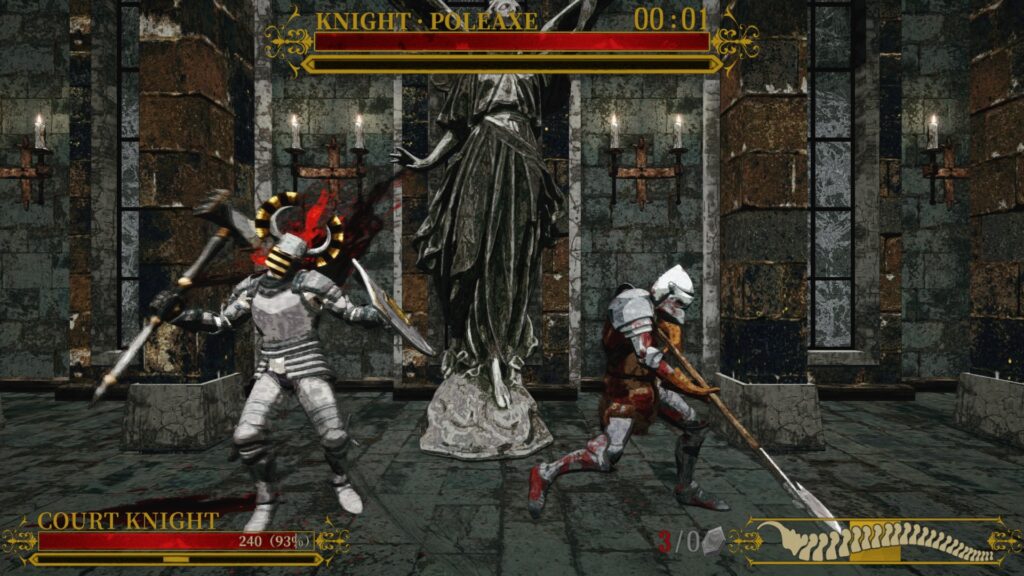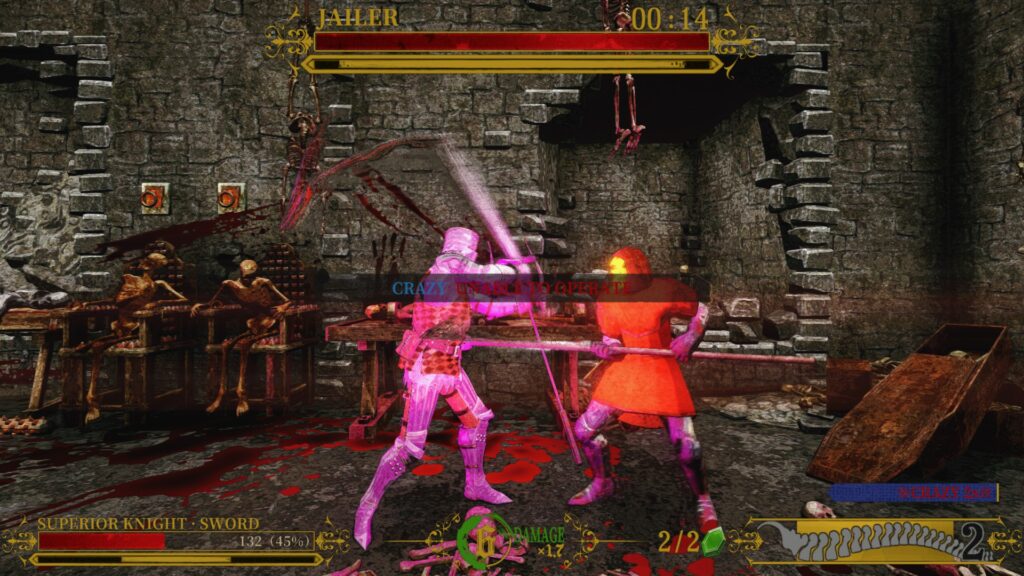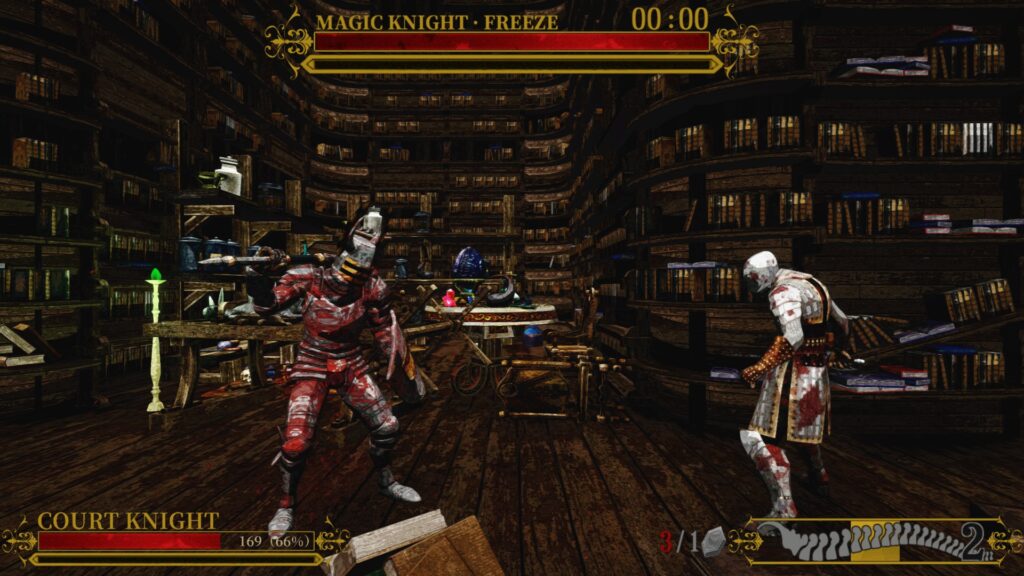
Developer: Melancholia Studio
Publisher: Thermite Games
Platforms: PC, PS4, PS5, Xbox One, Xbox Series X|S
Tested on: PC
Corpse Keeper – Preview
Necromancy is a topic that speaks to our collective imagination, and since it isn’t possible to bring back the dead in real life, video games are perhaps the best way to live out one’s necromantic fantasy. There is plenty of variety too, from leading armies of the undead in The Unliving to letting your freshly revived corpses solve puzzles in Necroboy. Melancholia Studio has also tackled the topic in their genre-blending action-strategy rogue-lite title Corpse Keeper.
In Corpse Keeper, various factions are at war, seeking to collect as many souls as possible for their lords in the process. One of these factions, the so-called Demon’s Children, is trying to summon their namesake. As a member of this shadowy cult, you have successfully infiltrated the royal family’s inner circle, which puts you in the perfect position to further the Demon’s Children’s goals. By convincing the prince of Fabreux to perform a ritual, you are able to bring the demon to the country. Things go awry, however, as the prince is assassinated mid-ritual. This puts a wrench in your own plans. The intent was not to let the demon roam freely, as you wanted to absorb his powers for yourself. Sensing your malicious intent, the freshly summoned demon turns against you. It’s now up to you to stop him, lest the world must submit to the demon.
After an introductory scene, which sets up the above premise, a quick tutorial lets you familiarise yourself with the skills you’ll need to use to survive what awaits you. While Corpse Keeper supports keyboard inputs, it’s highly advised to use a controller instead, due to the sheer amount of available actions and the way buttons are laid out. Mindless button mashing and brute forcing your way through combat isn’t a viable strategy here anyway, as dodging and parrying are essential to victory. There are two main enemy types here: corpses and humans. Corpses are susceptible to damage, but can’t be stunned and will rush into you headfirst. Meanwhile, human enemies are more careful in how they approach you and will need to have their stamina drained by stunning them before they will take damage. Initially, Corpse Keeper’s combat mechanics can feel overwhelming, but they quickly become second nature as you get to grips with the game. Dodging and parrying enemies is satisfying, and the game gives you a decent response window, so that it doesn’t feel unfair while still keeping things challenging. You’re able to customize different warriors at your laboratory, so you can tailor each character to your playstyle, provided you have the resources available.
Taking inspiration from the PSX era, Corpse Keeper presents players with old-school 3D character models juxtaposed against 2D environments. The retro visuals are complemented by a dark atmosphere befitting the game’s narrative. Each character looks unique, although they all have an ominous presence about them. They look like the grizzled combat veterans you’d expect to take on the forces of an evil demon without batting an eye. At the time of writing, the audio wasn’t quite up to par with the visuals, with some issues with the mixing of sound effects and a notable absence of music. One thing Corpse Keeper does get right is the effects of weapons interacting with armor, as the bulk of the heavy metal weaponry is reflected in the loud noise effects.
While Corpse Keeper’s story campaign is simple enough when it comes to its premise, actually completing it is of course easier said than done. The narrative sets a sixteen-day time limit in which you need to gather the souls of the most powerful humans of Fabreux and use them to strengthen your own army of the dead to take on the demon’s forces and ultimately the demon himself. Just gathering souls isn’t enough either: you’ll need to gather the necessary resources to resurrect the skeletons of fallen warriors to grow your own army. Apart from basic resources, which you can find pretty much everywhere, more specific body parts are found at target locations. Exploration is key here, but you’ll also need to keep an eye on your summoned warriors as they decay when they take damage. As such, you’ll need to return to your laboratory occasionally to regroup. There are three types of damage that you’ll need to deal with: decay, bone damage, and flesh damage. Flesh damage represents a warrior’s health, and can be healed. Meanwhile, bone damage leaves a character more vulnerable to attacks and instant kills. Finally, when the decay meter reaches 100%, it’s the end of the line for a warrior.
With five locations to explore, and more on the way, there is plenty of variety in the environments already. Each location offers a unique set of enemies and varying difficulty levels. Lower difficulties are safer to explore, but higher difficulties offer better rewards. It’s a good idea to explore different locations and familiarise yourself with various enemies at lower difficulty before returning and tackling a location at a higher difficulty. Keeping an eye on your army’s status is important too, as lingering too long will make returning to base a slow ordeal. Given that Corpse Keeper is a rogue-lite, subsequent runs are slightly easier as any items and progress are taken with you, giving you a head start.
Conclusion
Even in its current state, there is already plenty of meat to be found on Corpse Keeper’s bones. The combat system is intuitive and streamlined, while still maintaining a sense of challenge as some of the enemies are quite ruthless. Managing a decaying army of the undead is fun, with the caveat that you might grow attached to some warriors, only to see them decay a couple of in-game days later. The retro visuals carry plenty of oomph, although the soundscape does leave some things to be desired. As for the full release, we hope that some aspects are rebalanced, but other than that, we can’t wait to see how the game evolves.
Corpse Keeper – Preview,








No Comments